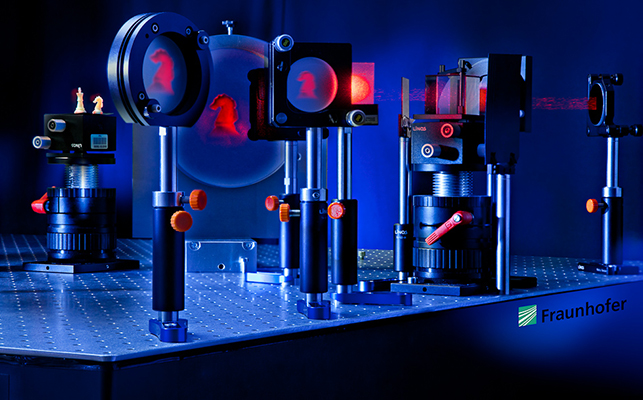The well-established Shack-Hartmann wavefront sensor (SHS) is a common workhorse solution in astronomical adaptive optics (AO) applications. Despite its widespread use, two fundamental characteristics of the SHS hinder its application to more demanding scenarios such laser propagation over long horizontal paths which produce scintillation effects.
First, due to the computationally expensive wavefront reconstruction procedure, the bandwidth of the SHS is limited. As a consequence, deploying SHS-based AO systems on moving platforms and/or for satellite tracking is difficult. Second, the SHS is highly sensitive to scintillation effects. Obscuration or saturation of parts of the sensor’s pupil can lead to significant failure rates in the wavefront reconstruction process.
As an alternative to the Shack-Hartmann wavefront sensor, holographic wavefront sensors (HWFS) provide the potential for significantly increased bandwidth capabilities as well as insensitivity to obscurations. The HWFS consists of two main components: a holographic diffractive optical element (DOE) and a small detector array. By illuminating the DOE with a beam of interest, spots corresponding to each wavefront aberration present in the beam are generated on the detector plane. The amplitude of each aberration can then be determined from the normalized intensity difference between spots. Accordingly, the modal decomposition of a wavefront into its components is a diffraction-based process and is carried out at the speed of light.
Despite these advantages, the accuracy of the HWFS is compromised due to presence of intermodal crosstalk effects which limit the sensor’s performance considerably. In the Adaptive Optics group at Fraunhofer IOSB we focus on techniques to suppress this crosstalk, and improve the performance of the HWFS.
 Fraunhofer Institute of Optronics, System Technologies and Image Exploitation IOSB
Fraunhofer Institute of Optronics, System Technologies and Image Exploitation IOSB 